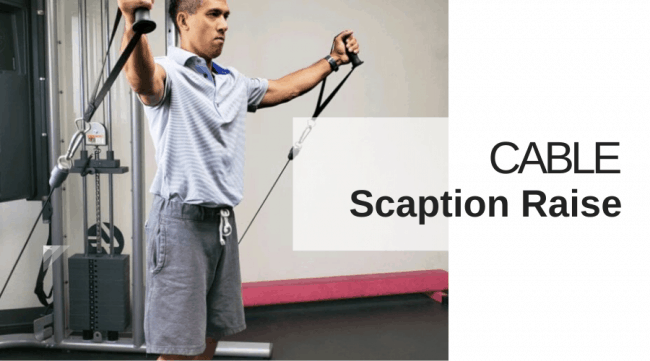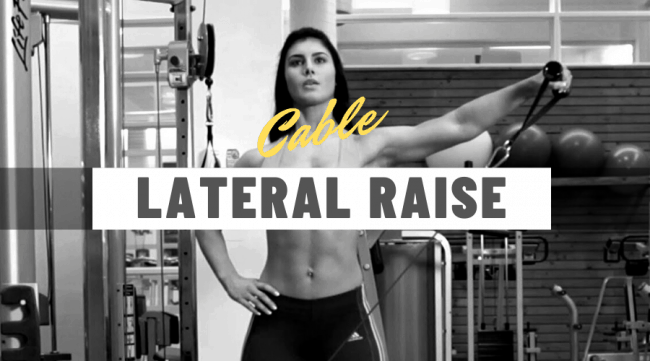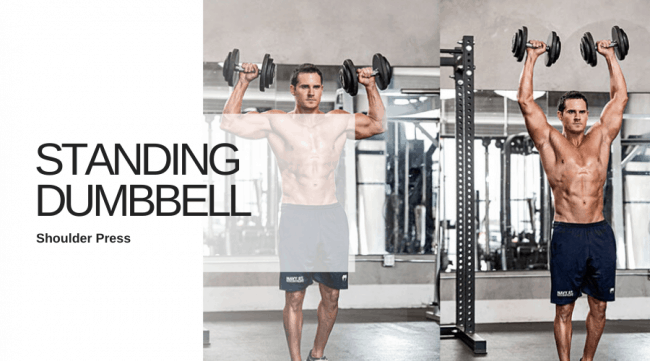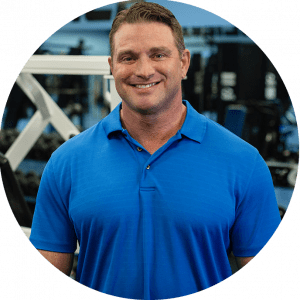
Your front and side delts are used in all kinds of exercises. They’re obviously engaged in arm, chest and full-body movements, but they can also be engaged in back movements. This means that strong front and side delts don’t just look good. They are essential to avoiding injury. With that in mind, here is our pick of the best front delt exercises and the best side delt exercises.

Quick Jump To List
(Cable) Front Raise
For the cable front raise, you stand with your back to the pulley and hold the handle in an overhand grip. Then you raise your arm until your hand is just above your shoulder, keeping it straight throughout. Lower slowly and repeat.
For the regular front raise, you grasp a dumbbell in an overhand grip. Then you raise your arm straight out in front of you until your hand is level with your shoulder, keeping it straight throughout. Lower slowly and repeat.
Both options are very much front deltoid exercises as you’re raising the weight without bending your arm. The reason we prefer the cable lateral raise option is because it applies constant resistance. The plain front raise really has most of the resistance at the end of the movement. Having said that, even with just a dumbbell, it’s still one of the best front delt exercises around

(Cable) Scaption Raise
This is basically the same exercise, except that instead of raising your arms directly in front of you, you keep them at about 30 degrees to your body.

(Cable) Lateral Raise
This is also the same exercise except you’re moving your arm up and down to the side rather than in front of you. That means if you’re using a cable, you need to stand sideways to the cable. Again, you’re using an overhand grip.
Even with a cable, this one is only likely to get the side delts really engaged as you head towards maximum motion range. It’s OK if you only have a dumbbell. This is still one of the best side delt exercises around.

Standing Dumbbell Shoulder Press
In principle, you can use any form of shoulder press you want. In practice, we’re suggesting the standing dumbbell shoulder press for two reasons. Firstly, it’s nice and stable and gives you a safe motion range. Secondly, it forces you to work both shoulders equally, whereas a barbell will let you favour one over the other.
Your starting position is the key to getting this exercise right. You want to stand with your arms raised slightly and with your elbows forming a right angle between your upper and lower arms. This is really important to avoid the risk of injury to your rotator cuffs. Use an overhand grip for the dumbbell.
Push the dumbbells upwards to the point where your arms are almost straight (keep your elbows slightly bent). Then slowly lower your arms back to the point where your elbows form a right angle with your body.

Arnold Press
The Arnold Press takes a bit of practice, but it hits all the delts big time. You start the Arnold Press as though you were just finishing a standard bicep curl, albeit one using both arms together. Basically you want the dumbbells to be at the upper end of your mid-pecs. You’re then going to push upwards and as you do, you’re going to rotate your arms so that by the time they’re fully outstretched, your palms will be facing outwards.
This sounds straightforward on paper and, like everything else, it is when you get the hang of it, but the first few times you do it, it can feel very strange. That being so, it’s best to be seated, preferably in front of a mirror or with a partner (or both). Perhaps use light dumbbells until you have the motion down pat and then use proper weights.

Bonus - Upright Dumbbell Row
We know most people will be staring in disbelief at this one being put in as a bonus. Ironically, people will probably be surprised for one of two completely different reasons. If you’re into bodybuilding, you’ll be wondering how we could put together a list of the best front delt exercises and the best side delt exercises without including this. If you’re not, you’ll be wondering what we were thinking of that we included an exercise which is known for leading to injuries.
Let us explain. If you really want to build up your delts, including your front and side delts, then the upright dumbbell row is superb - provided that you do it properly. We prefer the upright dumbbell row to the upright barbell row for the same reason as before. It makes you work both shoulders equally. If you’re really into bodybuilding, or just building up muscle on your shoulders, then it’s definitely worth learning. If you’re just into general workouts, then it may be safer to pass due to the injury risk.
We usually don’t like to repeat ourselves, but if you’re going to do an upright dumbbell row, you absolutely must have healthy shoulders, excellent posture and perfect technique. Here’s what you need to know about posture and technique.
Stand with your feet in line with your hips, toes pointed forwards, knees slightly bent.
Hold the dumbbells in an overhand grip. Have your arms just in front of your chest, elbows slightly bent.
Keeping your shoulders down, raise your upper arms so that your lower arms come up with them. Let your elbows go out. Basically, your arms should look and work almost like a pair of wings.
When the dumbbells are just under your chin, pause and lower slowly.
Resist any temptation to raise the dumbbells any higher as this is basically asking to get injured.
Best front delt exercises and the best side delt exercises - conclusion
Depending on how you organize your workouts, you could either incorporate a few of these exercises per session or use them as part of a proper “arm day”. Whichever you choose, remember that technique matters so focus on that before you start thinking about adding weight.
Jeff is a medium-sized private gym owner that has itself over 100 members and is our equipment reviewer. If it builds muscle, gets you fit or pretends to be healthy, Jeff knows all about it. Worked with Fitness Superstore as a buyer for 10 years. Seriously BIG guy with a heart to match. Always laughing and looking for a windup. Literally always eating













